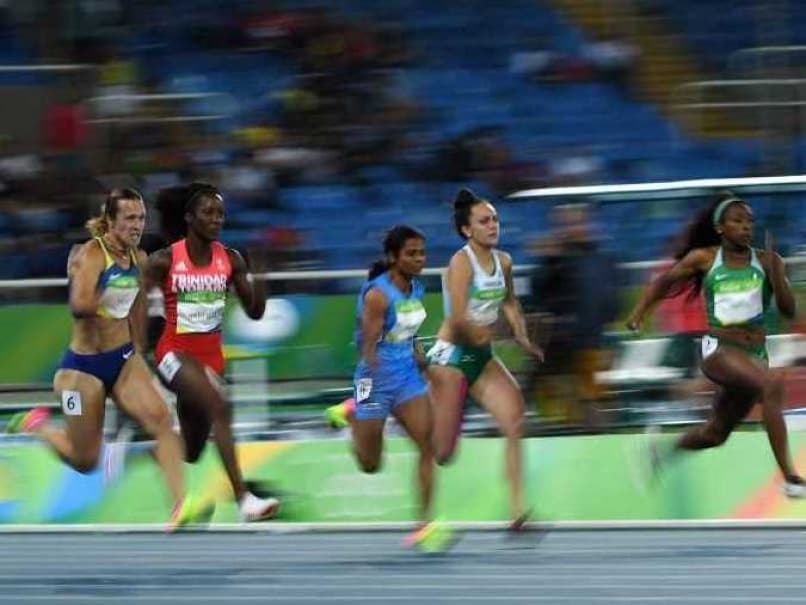The regulation of testosterone in sports exposes a fundamental contradiction: while doping policies aim to eliminate artificial performance enhancement, women with naturally high testosterone due to Differences in Sexual Development (DSD) face outright exclusion unless they medically suppress their testosterone – effectively forcing them to alter their bodies to compete. This paradox raises critical legal and ethical concerns about fairness, bodily autonomy, and the integrity of sports governance.
Through this article, the authors argue that these policies unfairly penalise natural biological variation while failing to address systemic failures in anti-doping enforcement. This arbitrary discrimination on the sole parameter of testosterone suggests a skewed perspective on the participation of select athletes in high-performance sports.
Testosterone And Performance
While testosterone takes centre stage in disputes of this nature, regulatory bodies often ignore other factors affecting athletic performance, without proper scientific backing and justification. In the landmark Dutee Chand dispute, the Court of Arbitration for Sport ruled that the The International Association of Athletics Foundation (IAAF) did not provide enough evidence that a testosterone-level differential resulted in unfair competitive outcomes. This brings to light a multitude of issues largely gone unnoticed in the sporting world, with athletes’ biological advantages being glorified without raising questions on their eligibility in competitions. Finnish skier Eero Mäntyranta had a genetic variant that increased the oxygen-carrying capacity of his red blood cells by 25-50%, resulting in seven Olympic medals. He did not have to reduce his biological levels by donating blood. The same can be argued for Michael Phelps, who, with his unusually large wingspan and foot size, cemented his status as the greatest swimmer ever.
Despite strict regulations and monitoring, athletes exploit World Anti-Doping Agency (WADA) norms and continue participating at the top level of their sport, showcasing the stark contrasts between the toleration of artificial enhancement over the harsh bans imposed on athletes with DSDs. Cyclists and track athletes rampantly engage in microdosing, a method of taking Performance Enhancing Drugs in small doses that metabolise quickly, leading to many cases of doping going undetected. This greatly undermines the enforceability of anti-doping mechanisms.
Moreover, the bans imposed on athletes caught doping are often temporary or time-bound, with multiple athletes returning to compete at the level they left at. This was most notably observed in the cases of Ben Johnson and Justin Gaitlin, who, upon testing positive for Stanozolol and Amphetamines, respectively served short bans before returning to compete. Athletes with DSD, on the other hand, whose advantages are derived from biological conditions rather than synthetic enhancement, have no way of returning unless they adhere to medical procedures that fundamentally alter their physiology.
Effective doping bans ought to have levelled the playing field by now if success was determined solely by testosterone. However, the ongoing doping scandals highlight a more serious weakness in this logic – performance is impacted by a complex web of interrelated factors that go beyond hormone levels. This fact is overlooked by the selective scrutiny given to DSD athletes, which unfairly singles them out while permitting other athletes with biological advantages to compete freely. The reality that these benefits are unregulated emphasises how selective sports governance is, policing gender more harshly than performance itself.
The Discrimination
The DSD Regulations apply exclusively to female runners, while all athletes are subject to doping tests. This distinction potentially violates Article 14 of the European Convention on Human Rights (ECHR), which prohibits discrimination based on sex as well as other protected characteristics, including medical conditions.
World Athletics (WA) shifted its regulations from a general testosterone limit to targeting specific female athletes with DSDs, particularly those with a 46 XY karyotype in events from 400m to a mile. Testosterone and its presence common in both males and females, however is only regulated in female sport. The notion of seeing it as an unfair pedestal in female sport, while a competitive edge in male sport lacks any intelligible differentia for discrimination. This selective regulation raises gender discrimination concerns, as it exclusively affects certain female athletes while overlooking other performance-enhancing factors like training, diet, and biomechanics.
Caster Semenya, a Black woman from the Global South, faces discriminatory regulations rooted in historical racial and gender biases, reminiscent of the colonial-era policing of African bodies, exemplified by the case of Saartjie Baartman. The IAAF’s regulations contradict the UN Human Rights Council’s resolution condemning policies that pressure intersex athletes into medically unnecessary treatments, infringing on their rights to bodily autonomy, dignity, and non-discrimination.
Within this characterisation of vertical discrimination, there exists another hindrance. DSD Regulations discriminate within female athletes as the testing is done on the basis the basis. of a physical assessment of their phenotype and virilisation characteristics. The regulations carry out this subjective assessment over women with a stereotypically male phenotype, not including within their ambit, women who prima facie would have a stereotypically feminine appearance. Simply, the natural advantages seen in some women are similar to the competitive edge that male athletes may have. Therefore, the 10 nM testosterone limit unfairly restricts a biological trait in women while other induced advantages remain unregulated, particularly anabolic steroids.
The Hypocrisy Of ‘Fairness’
The IOC did not possess the ability to test for anabolic steroids till 1975. However, the first instance of testing a female athlete being verified for her gender, was in 1936. Further, there exists a constant misuse of the Therapeutic Use Exemption (TUE) system to justify anabolic steroid usage under false medical claims, with medical and legal loopholes in WADA’s regulatory interests.Despite the existence of a strict criteria, the enforcement of a zero-tolerance policy on Anabolic Androgenic Steroids (AAS) abuse cannot be executed, due to misconceptions and subjectivity in the study relating to androgen physiology. This stark contrast shows the discriminatory nature of DSD regulations, which penalises athletes with naturally occurring hormone levels like Semenya, while athletes can legally exploit legal loopholes and avail testosterone prescriptions. This is bolstered by the claim that the evidence brought by the IAAF to support the link between testosterone levels and athletic performance referred only to exogenous testosterone (externally consumed), and not endogenous testosterone (naturally produced).
Rethinking Sports Policies
To ensure fairness and integrity in sports, regulatory bodies must move beyond restrictive and discriminatory policies toward inclusive, science-backed solutions. Regulatory efforts should address anabolic steroid abuse, which provides an artificial advantage, while ensuring that testosterone limits for female athletes are based on fair and consistent principles. The authors suggest a combination of strengthening anti-doping measures, implementing individual assessments, and engaging experts to make policy decisions can create a system recognising natural biological diversity while also, crucially, maintaining a level playing field; true sporting integrity would rest on policies oriented to equity without unfairly targeting athletes.
(Aarav Midha was a second-year student of NLU, Jodhpur, who passed away in a tragic accident involving the students of NLU Jodhpur. This blog was one of the last pieces Aarav had authored. It was co-authored by Paavani Kalra, a second-year student of NLU Jodhpur)
Disclaimer: These are the personal opinions of the authors







